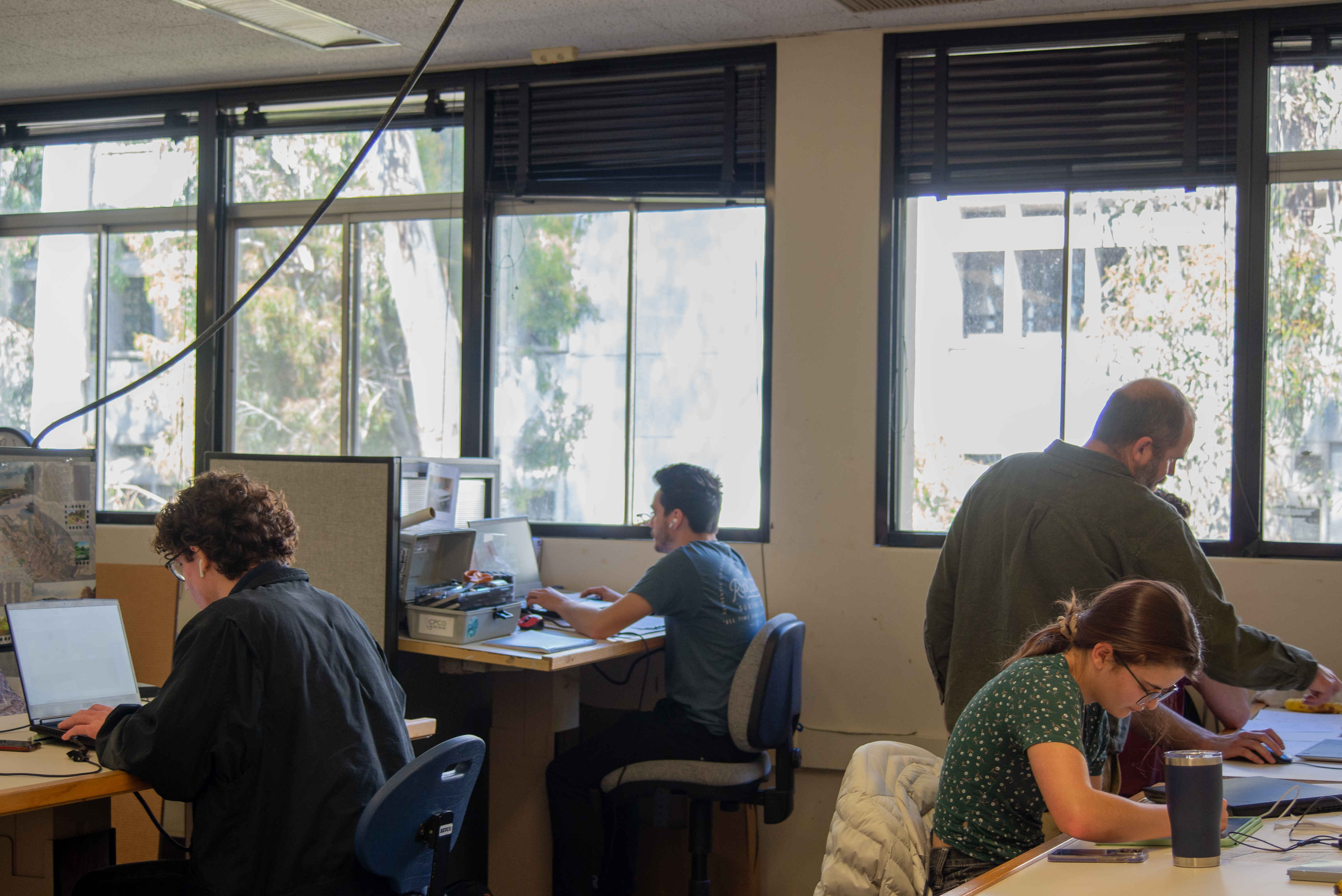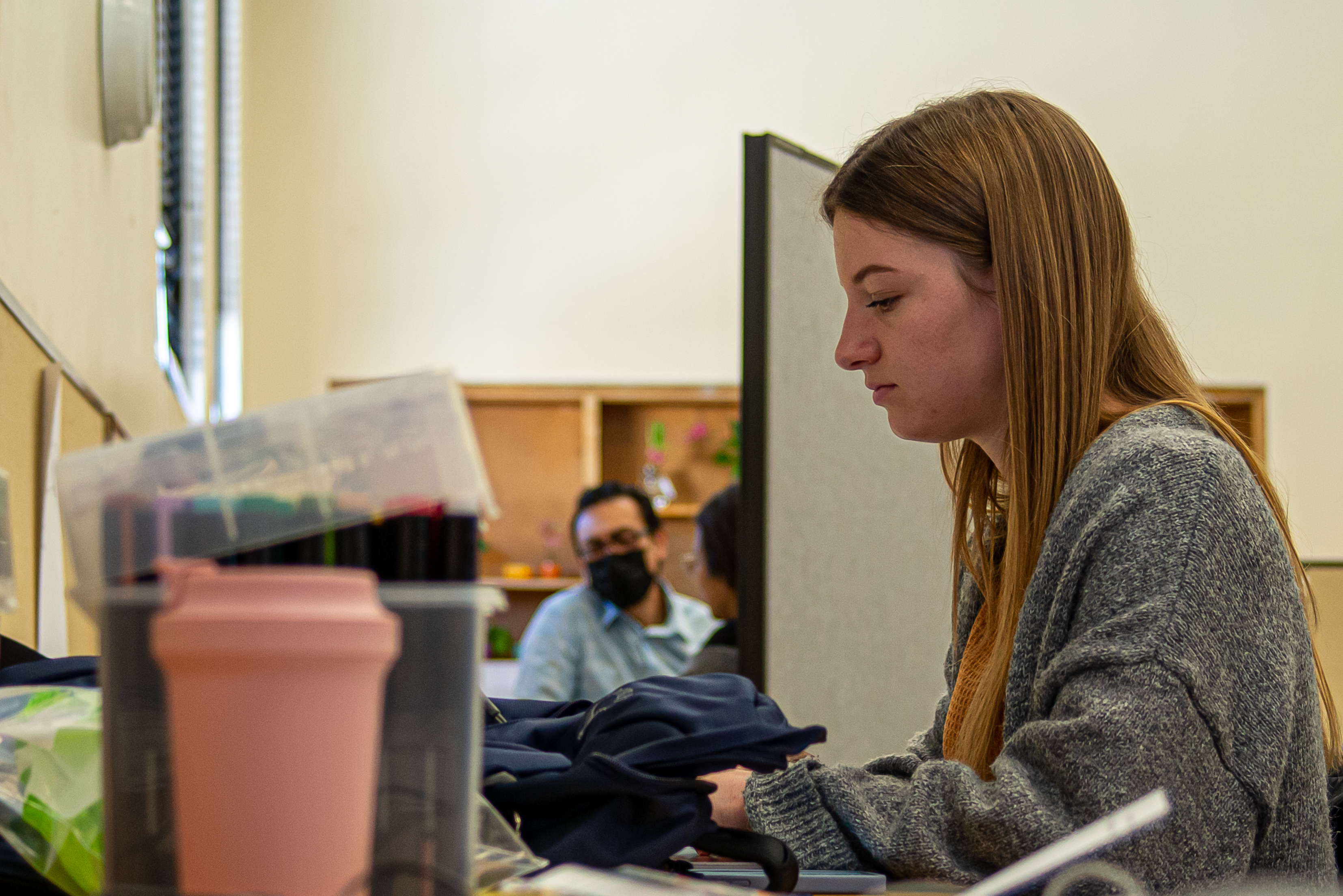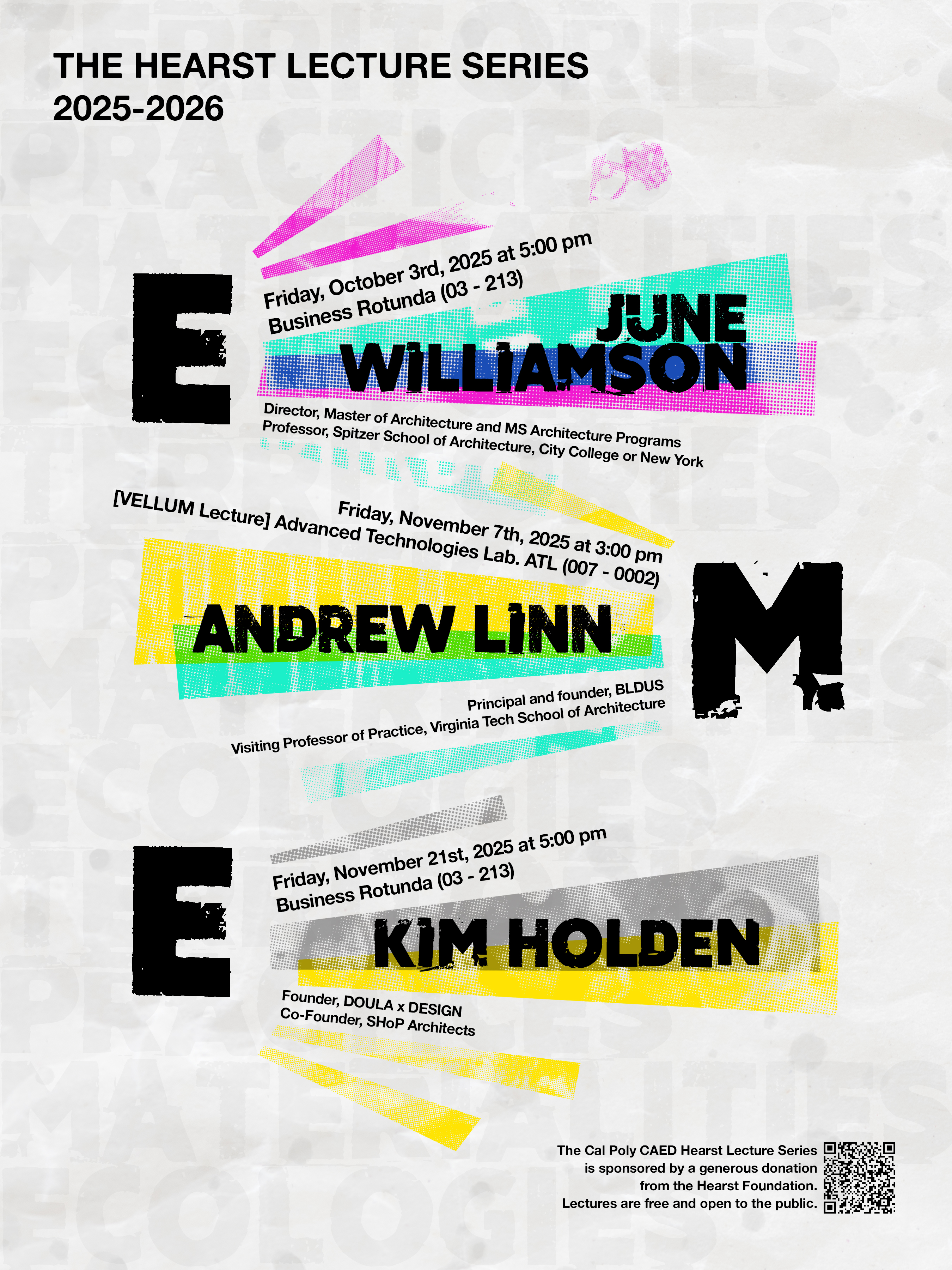
Landscape Architecture Senior Show Reaches ‘Transcendence’
By Simeon Johnson, Alex Flores
Fifth-year Landscape Architecture student Benjamin Clark works on final project graphics. Click on the image for a video narrative about the 2023 LA Senior show.
As fifth-year landscape architecture students prepare to present their capstone projects at the department’s senior show, their designs offer a promising vision of how public spaces can become more ecologically balanced and socially equitable. By challenging male biases in planning to better serve women, establishing urban agriculture on underused land, and reconnecting a city divided by a highway, these projects embody the ethos of Learn by Doing and demonstrate that students are graduating Ready Day One, equipped to tackle today’s challenges and create a resilient tomorrow.
True to the design process, students began their research during spring 2022 and reworked their ideas over the summer before completing most of their work during the fall and winter quarters. As their final quarter concludes, students are in production mode, creating graphics to communicate their ideas and display them through presentation boards at the 2023 Cal Poly Landscape Architecture Senior Show.
This year the senior class of around sixty students was divided into three studios, taught by David Watts, Cesar Torres and Aaron Liggett. Each faculty member guided students through the design process with their unique approach, helping them arrive at their final graphics.


1. Faculty member Aaron Liggett reviewing students' work 2. John Ty sketches out design for project board
From Liggett’s studio, Harrison Oldershaw reimagined the I-980 freeway in Oakland as a connective urban park, bridging the separation it initially caused. Growing up near the site, Oldershaw chose this focus because of his connection. When developing his ideas, he researched the historic split between West Oakland and downtown created by redlining and discriminatory zoning. He explained that the initial stages of his process focused on determining the void and barrier the freeway created and how he could unite both communities.
“The biggest challenge was just working with the scale of it all,” Oldershaw explained. “It’s a two-mile-long freeway. It’s 600 feet wide in some parts. And really, as a designer, I’m detail-oriented. I really want to dive in and figure out a really nitty-gritty solution for all the problems that exist there, so I think my biggest challenge was figuring out a process and a method to holistically look at the entire site and design a solution, thinking from that lens instead of really diving in and trying to figure out each individual square foot of space.”
Looking back at his five years in the program, Oldershaw says he feels confident entering his career and believes Cal Poly’s Learn by Doing approach has prepared him well. Although he plans to take a few months off, he is excited to enter the workforce and hopes to officially earn his license to become a landscape architect in the next few years.


1. Harrison Oldershaw working on his project graphics 2. Emma Smolik experimenting with graphics in Cesar Torres's studio
Amelia Aarsted worked on a similar project in Watt’s studio — repurposing unused land under a freeway. However, unlike Oldershaw, she created an urban farm that draws from the site’s historical context using permaculture and biophilic design. Aarsted transferred to Cal Poly’s landscape architecture program from a horticultural background. Over her years in the program, she has gradually opened up to the more experimental and theoretical side of design while maintaining her practical approach. In her senior project, she embraced this way of thinking.
“Why not? Let’s try something under a highway in a narrow right-of-way beside a railroad track. Let’s try something kind of wild and see if it inspires somebody, if it inspires a new movement, if it inspires someone else’s project, if it inspires an actual project in the ground sometime, that would be pretty amazing,” she said.
Aarsted also discussed some of the more challenging aspects of the senior studio, like the implicit pressure associated with the capstone project. She manages this stress by remembering that it is a marker of where she is now rather than the most remarkable thing she will ever do. She aims to explore and develop ideas from her senior project once she is in the design field.
“I’m hoping to find a job and get some experience in the industry. I’m aiming to have my professional license and hoping to add a couple of certificates and things I’m interested in, such as becoming a certified arborist one day,” Aarsted expressed.
From Torres’s studio, Emma Smolik took an entirely different path, creating a guide with interventions for women’s safety and inclusivity in the landscape rather than designing a specific site.
“A lot of women experience anxiety in urban environments, and this is because of how [landscapes] have been designed,” Smolik explained. “There are two main causes for this anxiety; one is that many women experience harassment in landscapes, and another is that men have set a lot of urban environments and design standards for men.”
Smolik’s approach was heavily research-oriented, but finding sources was challenging due to the lack of existing work about women’s safety in public spaces. She eventually had to resort to interviewing dozens of people to gather her information.
“One of the ways I overcame the challenges of not being able to find concrete data is kind of reframing my project and making that part of the problem,” she said. “It created this call for action that more analysis on landscapes needs to be done to understand how it’s really affecting women and non-binaries in the landscape.”
Looking forward, Smolik plans to work for a few years to get more real-world experience before continuing her studies and pursuing a master’s.


1. Various sketches and models by students from David Watts’s studio 2. Concept diagrams posted on bulletin boards above a desk
Aside from the effort that goes into each senior’s studio project, coordination is required to assemble the show.
“Students are 100% responsible for putting on the show,” Smolik explained. “All of us decided to divide up into different groups to tackle everything that needed to be done. The different groups include advertising, funding, catering, finding a venue and then website.”
Theming is also a traditional show component, with students selecting unique aesthetics each year. After a few iterations, students decided on a concept inspired by tarot cards, with each student and faculty member assigned a card that reflects their personality and interests. The advertising committee initially toiled to produce a powerful one-word title for the event but, after some time, decided that “transcendence” summed up the 2023 senior studios. They felt the word reflected their mastery and perseverance in finalizing the landscape architecture program.
Oldershaw noted that putting together the event while simultaneously completing the capstone project can be a challenge. However, students see it as a proving ground for their teamwork skills and find it highly rewarding to see everything falling into place as the quarter ends.
Completing the senior capstone project is a defining moment in a landscape architecture student’s academic journey. The senior show is a time for celebration and marks the commencement of careers that will shape the future of the built environment.
“The senior show is a culmination of all our experiences in Cal Poly, all put up as one final project,” Oldershaw says. “And it’s really cool because you get to really see each student’s individuality as a designer and as a person and also really just get to explore their experience through their five years here, all through just one project that they’ve worked on for three quarters.”
The 2023 Cal Poly Landscape Architecture Senior Show will occur on Saturday, March 18, from 1:00 pm to 5:00 pm, at Cal Poly’s Swanson Center of Effort Conference Hall in building 156, room 110. The event is free and open to all. To learn more about the senior show, visit CPLA's website or the studio’s Instagram page @cpla.seniorstudio.
To help support the future of the Landscape Architecture Senior Show, click here.




